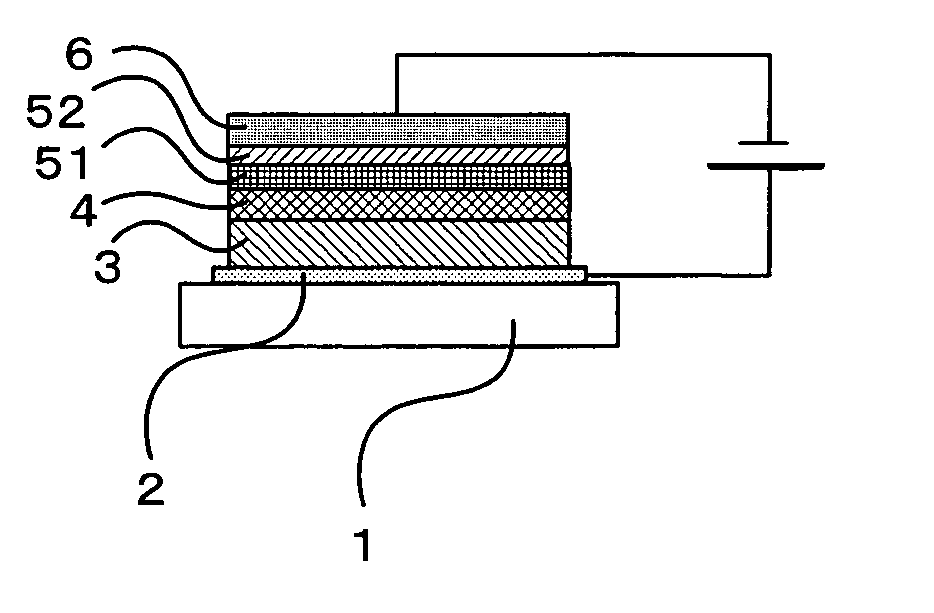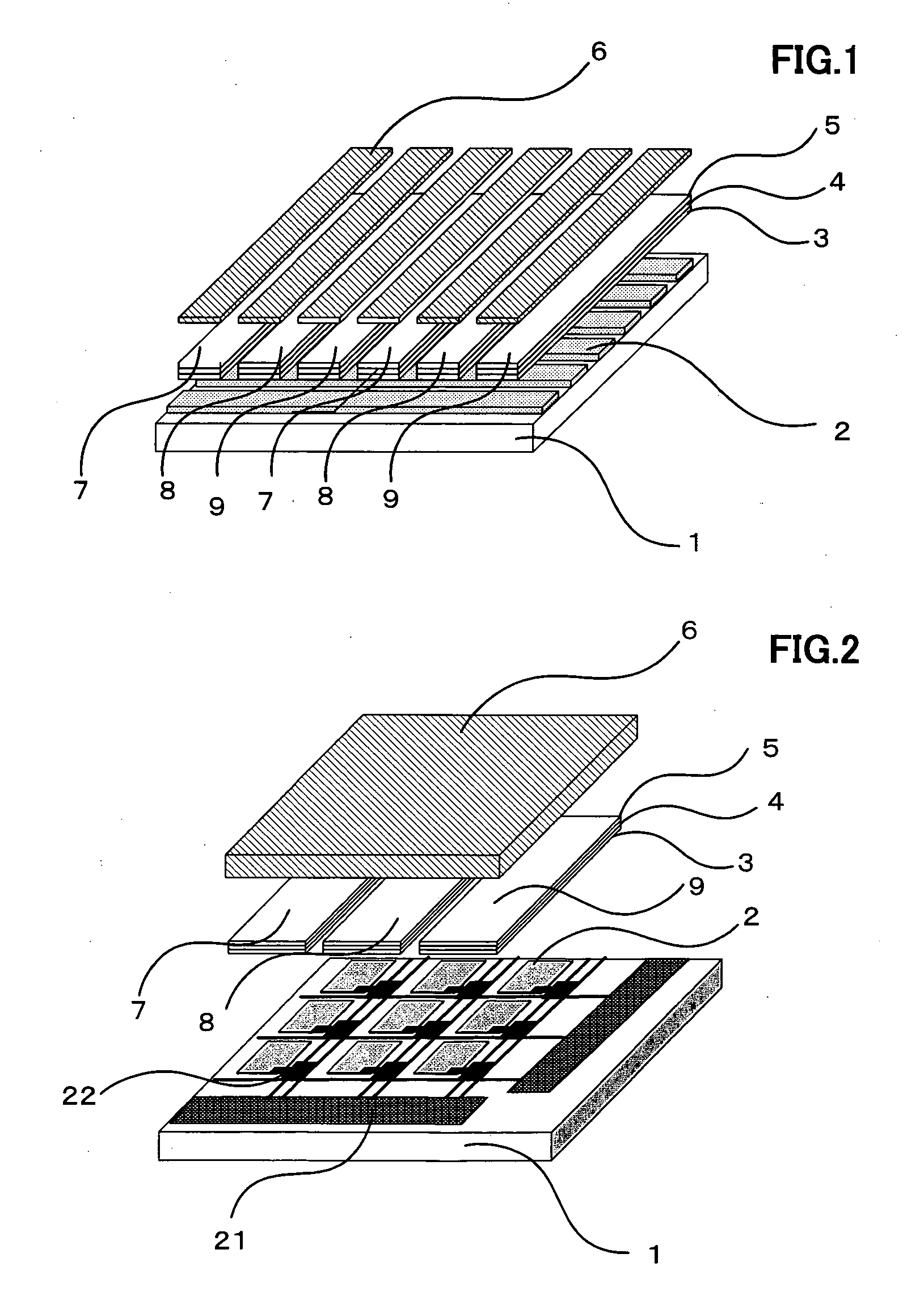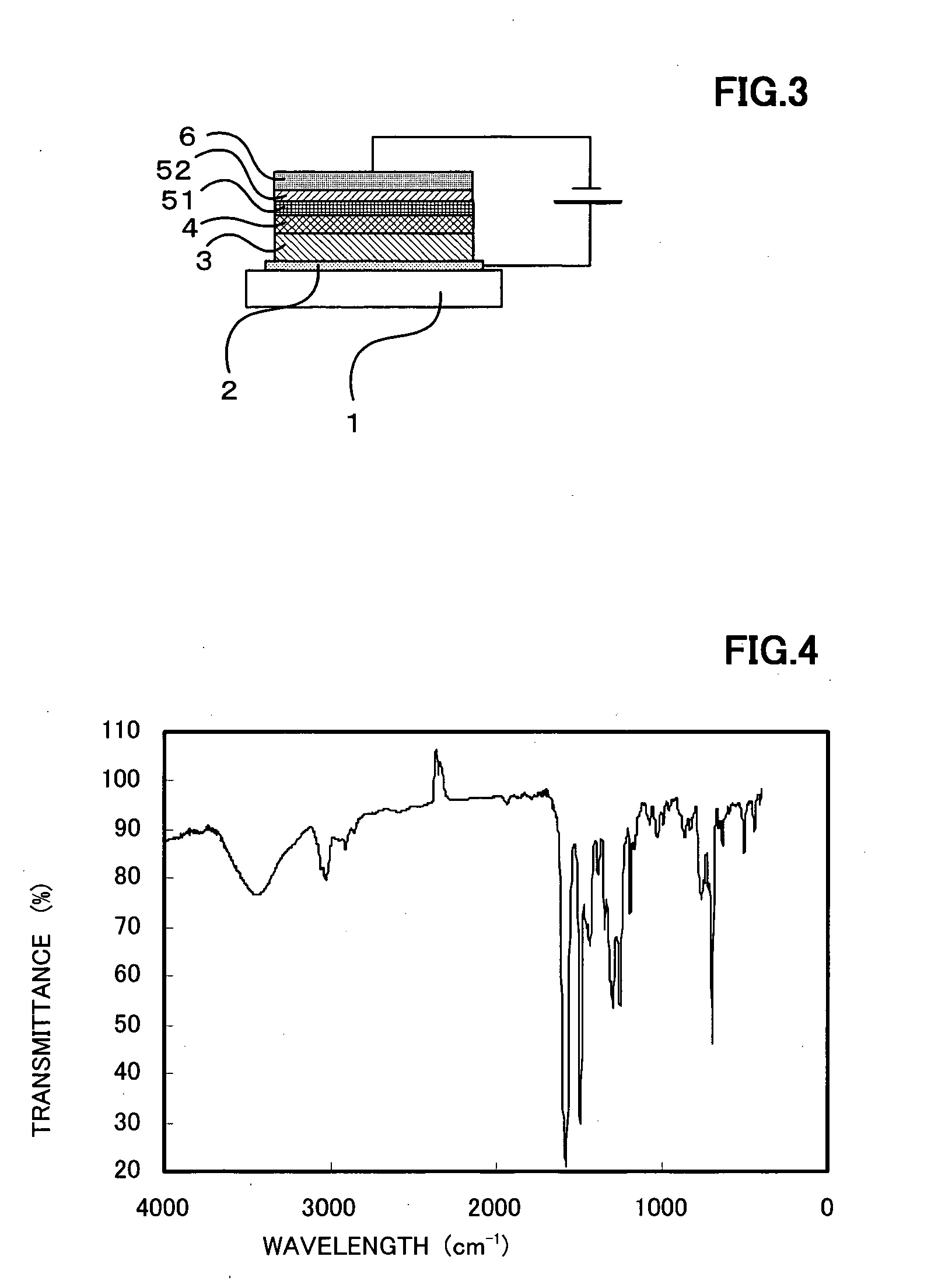Organic electroluminescence element
a technology of electroluminescence element and organic light, which is applied in the direction of luminescent composition, organic chemistry, thermoelectric devices, etc., can solve the problems that the need for high luminous efficiency and stable long-term operation is not fully met, and achieves the effect of long operation lifetime and high luminous efficiency
- Summary
- Abstract
- Description
- Claims
- Application Information
AI Technical Summary
Benefits of technology
Problems solved by technology
Method used
Image
Examples
example 1
Synthesis of 1,3,6,8-tetra(4-phenoxyphenyl)pyrene Represented by the Formula Below
[0141]
[0142] 1,3,6,8-tetrabromopyrene was obtained by the reaction of one equivalent of pyrene and 4 times as much as bromine in equivalent in a nitrobenzene, according to the method described in Annalen der Chemie, vol. 531, p. 81.
[0143] Next, 4.4 equivalents of 4-phenoxyphenylboronic acid, 10 equivalents of sodium carbonate in a 2 mol / L aqueous solution, and 0.12 equivalents of tetrakis(triphenylphosphine)palladium (0) were added to one equivalent of 1,3,6,8-tetrabromopyrene, and the mixture was subjected to heating under refluxing to allow reaction for three hours, using benzene as a solvent.
[0144] After cooling the reaction product, the deposit formed by adding methanol to the reaction product was washed with water, and recrystallized from THF-methanol to obtain a crude product. The crude product was purified by sublimation in vacuo, to form a compound for the purpose.
[0145] An o-xylene solutio...
example 2
Synthesis of 1,3,6,8-tetrakis[3-(3-methyldiphenylamino)phenyl]pyrene Shown in the Following formula
[0146]
[0147] 4.4 equivalents of 3-chlorophenylboronic acid, 10 equivalents of sodium carbonate in a 2 mol / L aqueous solution, and 0.12 equivalents of tetrakis(triphenylphosphine)palladium (0) were added to one equivalent of 1,3,6,8-tetrabromopyrene obtained in the same way as for EXAMPLE 1, and the mixture was subjected to heating under refluxing to allow reaction for three hours, using benzene as a solvent. 1,3,6,8-tetra(3-chlorophenyl)pyrene was obtained after deposition and purification through recrystallization of the product.
[0148] 4.4 equivalents of 3-methyldiphenylamine, 10 equivalents of sodium tert-butoxide, 0.01 equivalent of palladium acetate, and 0.04 equivalents of tri-tert-butyl phosphine were added to this 1,3,6,8-tetra(3-chlorophenyl)pyrene in an amount of one equivalent, and the mixture was subjected to heating under refluxing to allow reaction for three hours, using...
example 3
Synthesis of 1,3,6,8-tetrakis[3,5-bis(3-methyldiphenylamino)phenyl]pyrene Shown in the Following Formula
[0151]
[0152] According to the same processes as for EXAMPLE 2, except that 3,5-dichlorophenylboronic acid was used instead of 3-chlorophenylboronic acid, and 8.8 equivalents of 3-methyldiphenylamine was used instead of 4.4 equivalents, 1,3,6,8-tetrakis[3-(3-methyldiphenylamino)phenyl]pyrene was obtained.
[0153] An o-xylene solution of the compound showed a strong blue fluorescence, by irradiating with ultraviolet rays having a wavelength of 365 nm. The molecular weight of the compound by the mass spectrum was 1,954, coinciding with the expected value for the molecular formula (C144H114N8). The IR spectrum of the compound in KBr is shown in FIG. 4.
PUM
 Login to View More
Login to View More Abstract
Description
Claims
Application Information
 Login to View More
Login to View More - R&D
- Intellectual Property
- Life Sciences
- Materials
- Tech Scout
- Unparalleled Data Quality
- Higher Quality Content
- 60% Fewer Hallucinations
Browse by: Latest US Patents, China's latest patents, Technical Efficacy Thesaurus, Application Domain, Technology Topic, Popular Technical Reports.
© 2025 PatSnap. All rights reserved.Legal|Privacy policy|Modern Slavery Act Transparency Statement|Sitemap|About US| Contact US: help@patsnap.com



